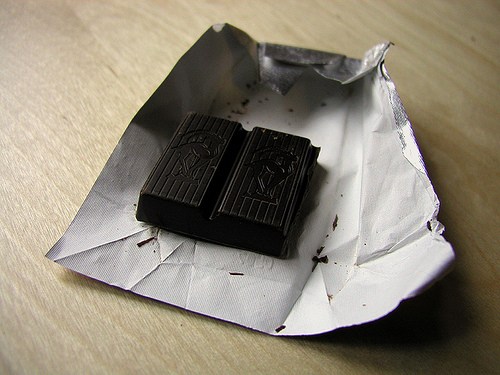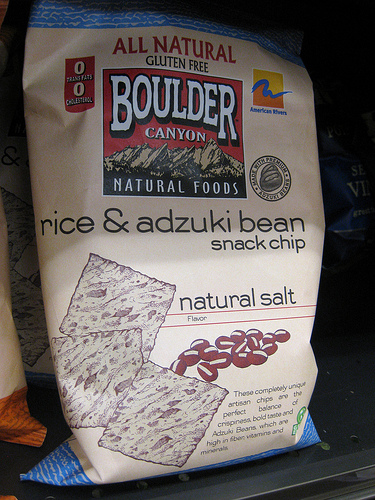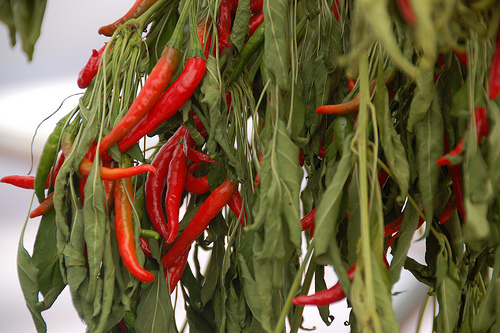 I’ve started writing a book on my favourite topics: natural health, Traditional Chinese Medicine, healthy food, and nutrition. This topic of food cravings was initially going to be a small sidebar tidbit of bonus info, but has turned into a lot more, so I thought I’d share it here. An amuse bouche for my future book, shared now.
I’ve started writing a book on my favourite topics: natural health, Traditional Chinese Medicine, healthy food, and nutrition. This topic of food cravings was initially going to be a small sidebar tidbit of bonus info, but has turned into a lot more, so I thought I’d share it here. An amuse bouche for my future book, shared now.
Food Cravings May Be Telling You Something
Or, it could be just a craving with no meaning. But either way, it’s a good idea to pay attention to the signals your body is giving you to see if there is action you can take.
Food cravings are tricky. Do you want that cookie because you need an energy kick, you’re bored, you’re lonely, you want comfort, you are inspired by a pleasant memory, or something else? Is it the flavour, texture, smell, or something else that you are wanting? Could it be a nutrient deficiency or physical imbalance that you need to address? Or maybe you just saw a commercial that prompted you.
Some common food cravings and their possible physical need are listed here, but know that just because you are craving chocolate (or something else), don’t think of it as free rein to binge. Sometimes a small amount is enough. And sometimes there are healthier alternatives with more nutritional value.
 Chocolate: Chocolate is comfort food for many. It causes a release of endorphins (feel-good hormones) and is also associated with serotonin (another feel-good hormone). Depending on the amount of sugar added, it can also be quite sweet. But even the bitter 70% plus chocolate, which gets more bitter with higher percentages (the kind I love—yum!), still makes us feel good. It has been called “food of the gods” and is considered an aphrodisiac by some. If you are craving chocolate, you may also be deficient in the mineral magnesium. Beware that chocolate is a possible migraine trigger, that white chocolate is a misnomer (it doesn’t contain chocolate liquor or cocoa solids that contribute to chocolate’s health benefits), and that chocolate is a stimulant that can trigger nervous-type symptoms. A little goes a long way, and it’s best to choose high quality chocolate products, low in added sugars and high in cocoa percentage (70% or more). Chocolate has been associated with many natural health benefits. Other magnesium rich foods include legumes, leafy greens, nuts, and seeds. If it’s the good feeling you’re craving, other things that can elicit this are caring or affectionate touch, exercise, and acupuncture!
Chocolate: Chocolate is comfort food for many. It causes a release of endorphins (feel-good hormones) and is also associated with serotonin (another feel-good hormone). Depending on the amount of sugar added, it can also be quite sweet. But even the bitter 70% plus chocolate, which gets more bitter with higher percentages (the kind I love—yum!), still makes us feel good. It has been called “food of the gods” and is considered an aphrodisiac by some. If you are craving chocolate, you may also be deficient in the mineral magnesium. Beware that chocolate is a possible migraine trigger, that white chocolate is a misnomer (it doesn’t contain chocolate liquor or cocoa solids that contribute to chocolate’s health benefits), and that chocolate is a stimulant that can trigger nervous-type symptoms. A little goes a long way, and it’s best to choose high quality chocolate products, low in added sugars and high in cocoa percentage (70% or more). Chocolate has been associated with many natural health benefits. Other magnesium rich foods include legumes, leafy greens, nuts, and seeds. If it’s the good feeling you’re craving, other things that can elicit this are caring or affectionate touch, exercise, and acupuncture!
Sugar and sweet foods: You could be experiencing blood sugar fluctuations or you may have candida yeast issues. Traditional Chinese Medicine would direct toward a possible “Spleen Qi” deficiency, common with symptoms of bloating, loose stools, fatigue, and a feeling of being foggy headed. Are you eating a lot of sugar already? If so, you are best to watch your sugar intake, up your fibre, and include protein and healthy fats to help regulate your blood sugar levels. Healthy foods that are sweet include fruit (see the Sweet section in this chapter for more information).
 Salty foods: This could signify adrenal depletion from chronic stress or some medications; adrenal insufficiency, as in Addison’s disease; or kidney disease. Traditional Chinese Medicine would point to the possibility of a “Kidney deficiency” with symptoms such as low back pain, joint weakness, bone weakness, fatigue, poor long term memory, frequent urination, and ringing in the ears. You may also have a mineral deficiency, particularly calcium. In our modern world, many are eating way too much salt (and sodium) because of processed foods—even ones that you wouldn’t think of as salty, like some cookies, frozen waffles, and cereals. Just as with sugar cravings, you may be craving salt because you are used to eating a lot of salt, if this is the case, start working on rebalancing your system by tuning into other flavours and eating healthier unprocessed salty foods (see Salt section in this chapter for more information).
Salty foods: This could signify adrenal depletion from chronic stress or some medications; adrenal insufficiency, as in Addison’s disease; or kidney disease. Traditional Chinese Medicine would point to the possibility of a “Kidney deficiency” with symptoms such as low back pain, joint weakness, bone weakness, fatigue, poor long term memory, frequent urination, and ringing in the ears. You may also have a mineral deficiency, particularly calcium. In our modern world, many are eating way too much salt (and sodium) because of processed foods—even ones that you wouldn’t think of as salty, like some cookies, frozen waffles, and cereals. Just as with sugar cravings, you may be craving salt because you are used to eating a lot of salt, if this is the case, start working on rebalancing your system by tuning into other flavours and eating healthier unprocessed salty foods (see Salt section in this chapter for more information).
Meat: I’ve met many vegetarians and vegan who have sometimes craved meat. What their bodies were often telling them was that they needed more iron and/or protein. There are many non-meat sources for this, including beans and legumes. Unsulfured prunes, figs, other dried fruits, spinach, and pumpkin seeds are also high in iron. Combine those with healthy foods rich in vitamin C—like citrus fruits, broccoli, strawberries, bell peppers, kiwi, and dark leafy greens.
 Spicy Foods: You may have trouble cooling down, and you’re craving hot spicy foods that will make you sweat so that you can cool off. You may also be addicted to the rush you get when you eat these foods. Traditional Chinese Medicine would question the health of your lungs or large intestines.
Spicy Foods: You may have trouble cooling down, and you’re craving hot spicy foods that will make you sweat so that you can cool off. You may also be addicted to the rush you get when you eat these foods. Traditional Chinese Medicine would question the health of your lungs or large intestines.
Sour foods: Traditional Chinese Medicine would assert that craving sour foods means that your liver is needing support. Some pregnant women also crave sour foods like lemons, as their taste buds are just one more of the things that change with everything else.
Fatty foods: Feel like you really need something deep fried, cheesy, or other rich fatty food? You may be craving fat, but it’s really the essential fatty acids (EFAs) that your body needs. Choose raw nuts, ground flax seeds, hemp seeds, chia seeds, and fatty fish like sardines, herring, mackerel, salmon, cod, or halibut for those brain-boosting, heart-healthy EFAs. Other filling good fat choices include olives and olive oil, avocados (one of my faves!), and coconut oil.
Car bs: Carbs (AKA carbohydrates) are not the evil they are sometimes portrayed to be. They are a major macronutrient, needed to supply easy energy to the body. The brain needs glucose, a basic sugar. It’s just that we have overdone it because of easy access to too many carbs, especially the simple carbs. As with the sugar and sweets cravings, you may have issues with your blood sugar and may need to watch your carbs and balance them with protein and good fats. Or maybe you really do need more carbs because of a high level of physical activity.
bs: Carbs (AKA carbohydrates) are not the evil they are sometimes portrayed to be. They are a major macronutrient, needed to supply easy energy to the body. The brain needs glucose, a basic sugar. It’s just that we have overdone it because of easy access to too many carbs, especially the simple carbs. As with the sugar and sweets cravings, you may have issues with your blood sugar and may need to watch your carbs and balance them with protein and good fats. Or maybe you really do need more carbs because of a high level of physical activity.
Crunchy foods: Is it the texture you crave instead? Crunchy foods can relieve tension, anger, and frustration, but can lead to overeating. If this makes sense to you, try some other physical activity, or go the opposite direction and try meditation, breathing exercises, or relaxing music. Carrots and celery sticks are some examples of healthy food options that go crunch.
Creamy foods: Cravings for mashed potatoes, ice cream, or macaroni and cheese are common comfort foods, and perhaps you need to be soothed. It’s no surprise that these foods are rich in carbohydrates and fat. Check out those categories above.
Caffeine: Ask yourself why you need it. Are you tired? Bored? Dissatisfied? Addicted? There is no nutritional caffeine deficiency.
Pickles and ice cream: These are the food cravings most commonly associated with pregnancy cravings. Ice cream, ok, easy to understand why someone would crave that—sugar and fat, it’s evolution talking there. Plus, ice cream is cold, and many women find they feel like furnaces. Is that part of the reason for the term “bun in the oven”? I looked it up, and apparently it’s not, but it fits anyway. How about pickles? Could be the salt that’s needed, though there isn’t evidence to support this. Having said this, my mom craved seaweed when she was pregnant with my sister and me. Back to the pickles, some women just like the crunchy texture, and again, the taste buds change during pregnancy.
How about some of the weird cravings?
Pica is the craving for dirt, paint, cigarette butts, laundry soap, matches, or other things that have no nutritional value. If someone is experiencing these cravings, they should be assessed for mental disorders like obsessive-compulsive disorder or intellectual or developmental disabilities. However, children and pregnant women have also been noted to experience pica cravings. Sometimes the craving may indicate nutritional deficiencies.
 Dirt, clay: Eating dirt may be something that we think of just for kids. Remember mud pies? Though I don’t recall ever eating any of that, at least not in volume. In some areas, however, eating dirt is not uncommon. It’s called geophagy. Some have thought that eating dirt helps supplement minerals. However, more recent research shows that it may be helpful in staving off pathogens in the gut. Kaolin clay is found in some nutrition stores, and it is recommended for cleansing. The problem is that while it can draw out impurities from the gut, it can also absorb important nutrients.
Dirt, clay: Eating dirt may be something that we think of just for kids. Remember mud pies? Though I don’t recall ever eating any of that, at least not in volume. In some areas, however, eating dirt is not uncommon. It’s called geophagy. Some have thought that eating dirt helps supplement minerals. However, more recent research shows that it may be helpful in staving off pathogens in the gut. Kaolin clay is found in some nutrition stores, and it is recommended for cleansing. The problem is that while it can draw out impurities from the gut, it can also absorb important nutrients.
Chalk: Though you may never have actually tasted a stick of chalk, you may have tried a calcium pill and tasted it as chalky. Turns out we can taste calcium, it does taste chalky, and it’s generally a taste we’d rather avoid. We perceive its flavour in the same realm as bitter. A study on mice showed that though most mice agreed that calcium-enriched liquid was ick, preferring water instead, one mouse strain called PWK actually chose the calcium drink over water. Those mice were found to have a different set of genes responsible for the taste receptors on their tongues, and one of those genes was the same as part of the receptor that picks up on sweet and savoury flavours. We don’t yet know if we have that same version of genes, but it’s possible. If you crave chalk, you probably could use more calcium in your diet.
Ice: Craving ice (called pagophagia—there really is a specific term for nearly everything) is often associated with iron deficiency anemia, but it’s not really clear. Since you’re not going to get iron from ice, if you have low levels of iron, choose iron-rich foods like meat, legumes, spinach, dried fruit, and pumpkin seeds instead. If you chew ice as a way to de-stress, find alternative ways to manage that, especially as chewing ice can damage your teeth. Additionally, Traditional Chinese Medicine recommends that you don’t eat too much icy, cold food, as it can impair your digestion.
Healthy nutrition doesn’t need to be complicated though, so don’t over-analyze, but feel free to ask me if you have healthy food questions.
What cravings do you experience?
